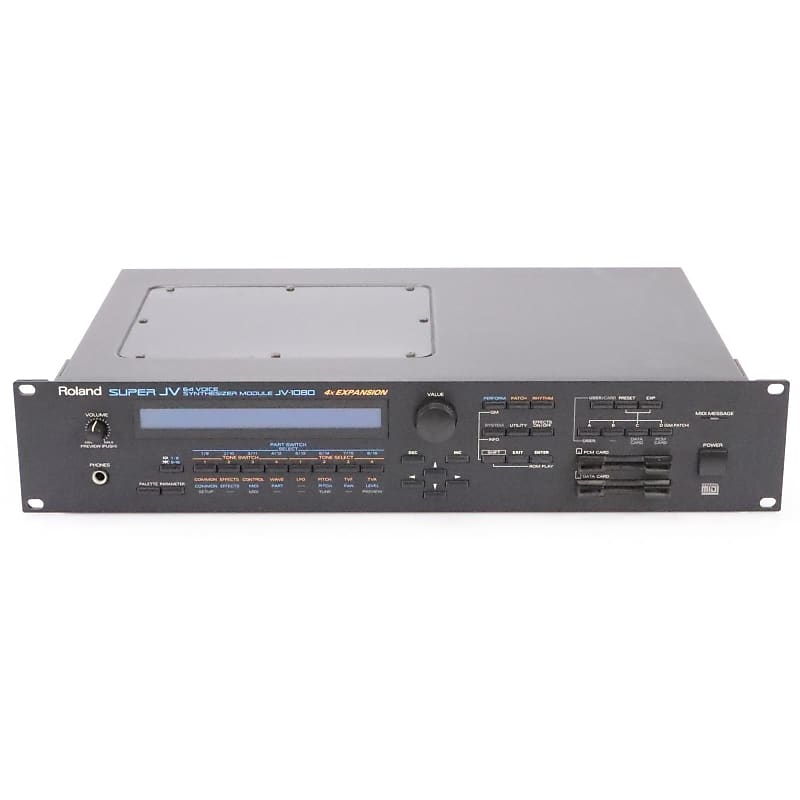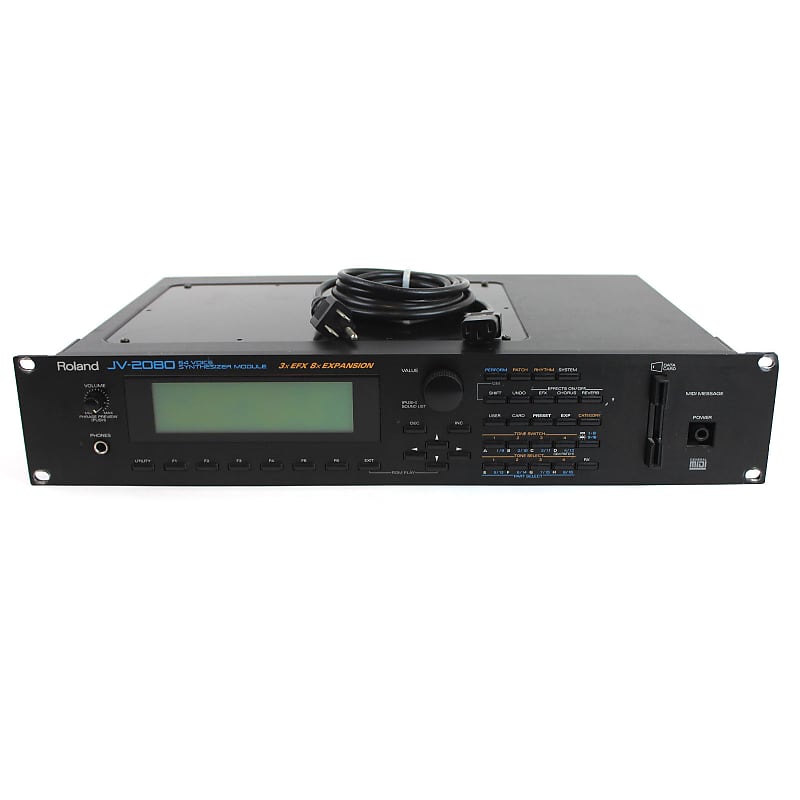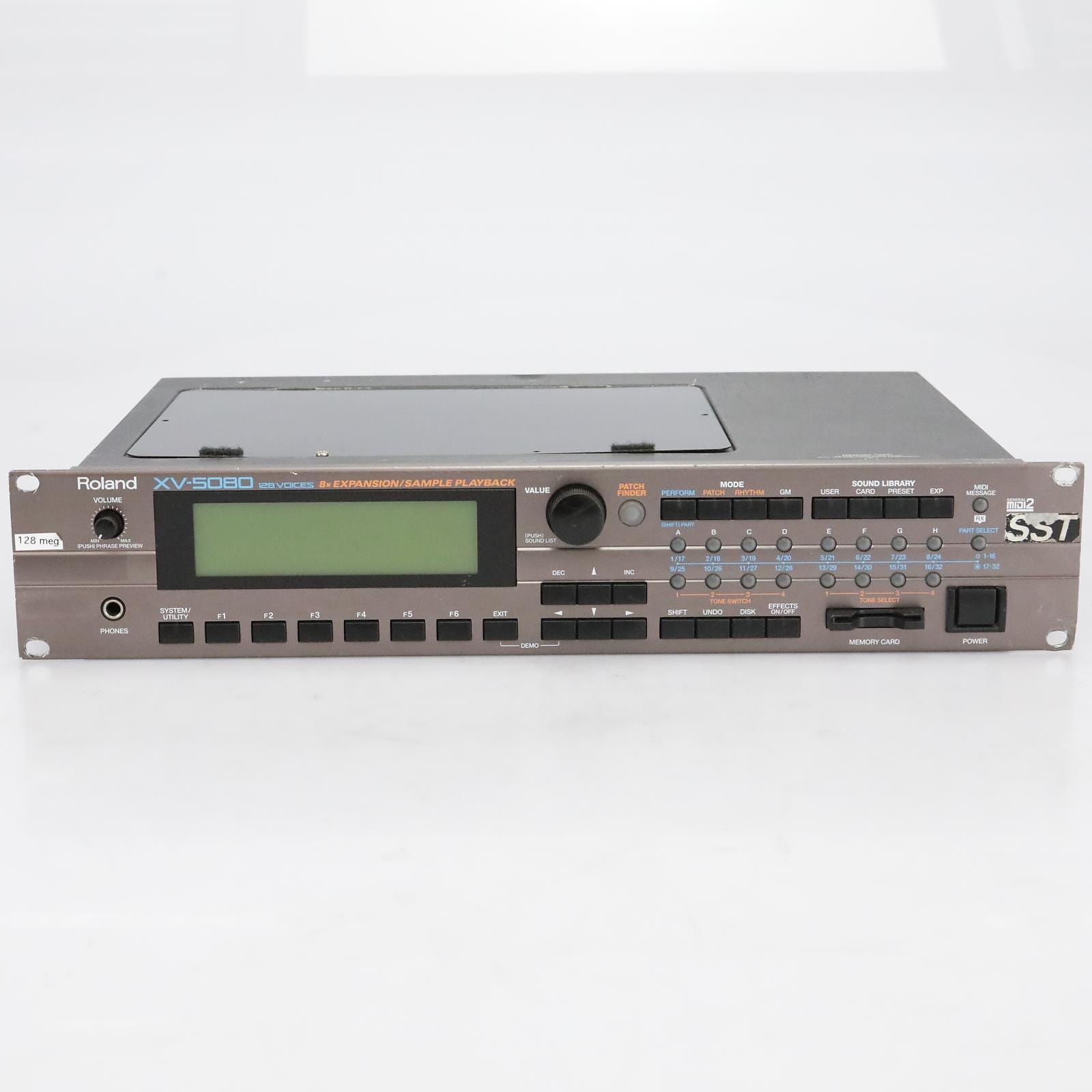There are a lot of vintage synthesizers on the market, many commanding eye-watering prices. No knocking the vintage mono- and polysynths of the world, but many are not really what you'd call versatile. Yes, they sound incredible, and what they do they do exceedingly well, but if you're looking for plenty of bang for your buck, more polyphony, even multitimbrality—while still retaining that classic, inspiring vintage sound—you've come to the wrong place. Where should the budget-conscious musician go then? Think Roland. Think '90s modules.
Starting in 1994, Roland released a series of rackmount modules that have since appeared on so many recordings it's not even funny. They've been used by artists as disparate as Kevin Parker of Tame Impala, Hans Zimmer, and LTJ Bukem. They're packed with waveforms that run the gamut from acoustic instruments to Roland classics, and in fact the same waveforms are so popular they're still being used in new Roland tech to this day.
These modules are also expandable, meaning you aren't limited to just the stock sounds. They're ridiculously polyphonic and multitimbral, so one can do the work of tens of synthesizers, all in a small footprint that won't eat up precious studio real estate. And they sound lovely.
So what's the catch? Why are these dream machines still affordable? Let's cast our gaze back to the '90s and have a little chat about sample-based synthesis, shall we?
PCM Sounds
There was a time not so long ago when the chief goal of synthesis was realism. These days we take for granted our 30GB multi-sampled orchestral Kontakt instruments, but just a generation ago, you were happy if you could get the sawtooth on your Minimoog to sound vaguely violin-like.
This is what drove the market into the hands of FM in the '80s and sampled-based synthesis in the '90s. Suddenly you weren't restricted to sounds that sort-of resembled acoustic instruments. You could work with PCM (pulse code modulation) samples of the real thing.
And thus the ROMpler was born.
Differentiated from samplers in that they could only play back waveforms already stored in memory, ROMplers were hugely popular throughout the '90s. Most every manufacturer had one or two on the market, such as E-Mu's Proteus series and Korg's 03R/W. Think of them as the sample packs of the '90s. They provided a bank of realistic sounds in a specific genre or style and—since many were rackmountable—proved very popular with space-conscious musicians participating in the burgeoning home studio market.
With current musicians still in thrall with analog (and to a lesser extent FM) PCM synthesis has yet to make a full comeback, which means these very useful rack modules are still affordable. If you're wondering why you should bother with a piece of hardware when you could just download another sample pack, keep in mind that these did more than just play sounds. The key phrase here is sampled-based synthesis. These were synthesizers, with all the editable parameters that you'd expect: filters, envelopes, LFOs, and effects. It's just that the sound source was sample-based.
Into this PCM fray jumped Roland, and in typical Roland fashion the company had soon gobbled up a sizable share of the market. Its first big ROMpler hit? The JV-1080.
Released in 1994, the JV-1080 is (Roland claims) the most-used module synth in history. Production lasted until 2001, four years longer than its "replacement," the JV-2080 (see below). Despite it being "just" a ROMpler, the JV-1080 was capable of putting out some truly huge sounds, thanks to its ability to layer up to four tones.
Each tone had its own sampled waveform, plus filter, amp envelope, and LFOs. It also had some great-sounding effects, including reverb, chorus, and 40 insert effects. And while the JV-1080 could do pretty much whatever you needed it to—bass, leads, effects—it was (and still is) a monster pad machine.
In 1994 memory was still expensive, and so the JV-1080 only came with 400 or so waveforms. However, the top of the unit could be popped off and expander cards loaded in, like adding RAM to a computer. Up to four 8MB SR-JV80 cards could be installed at a time, significantly expanding the capabilities of this already quite-capable workhorse. With up to 64-voice polyphony, plus six analog outputs on the back, the JV-1080 really was a versatile machine.
For the modern musician, the JV-1080 is attractive because of its versatility, its affordable price, and of course the sound. It's all over Tame Impala's Currents album, and Kevin Parker has gone on record saying he loves the "romantically nostalgic" sound of the JV-1080.
In a previous interview with Reverb, DJ/producer Ciel also said she was a fan, declaring, "I love the JV-1080. The patches are just so good in there."
If you're looking to expand your sound-making capabilities and harbor nostalgia for the decade of The Simpsons, the JV-0180 should be high on your Christmas list.
Two years after the release of the JV-1080, in 1996 Roland unveiled the JV-2080. More an upgrade than a new machine, the 2080 kept the basic sample-based synthesis architecture of the 1080. The 2080 also beefed up the effects DSP, allowing for three insert effects on each part, plus the display size was increased as well. The 2080 also had new digital-to-audio converters, as well as more presets and, most importantly, four more expansion slots.
The expansion cards are a big part of what make the Roland modules so much fun to own, so let's take a closer look at the SR-JV80 cards, which can be used in both the JV-1080 and 2080. Quite collectable in their own right, the cards vary from acoustic instrument sets like Orchestral (SR-JV80-02) and Piano (SR-JV80-03), to genre sets like Hip Hop (SR-JV80-12) and Techno Collection (SR-JV80-11), to keyboard collection like Vintage Synth (SR-JV80-04) and Keyboards of the '60s and '70s (SR-JV80-08).
The JV-2080 has been popular with producers of electronic music, particularly drum and bass. LTJ Bukem, Photek, and London Elektricity were all big users of the 2080 in the '90s. Techno maverick Legowelt is a current user, and has called it the "standard '90s production synthesizer." Like the 1080, it's an eminently usable module synthesizer that, thanks to its PCM sound engine, is capable of delivering some very unique timbres.
For more on the 1080 and 2080 and others in the series, check out the Reverb JV series buying guide.
The year 2000. A new millennium. A new module from Roland. The XV-5080 was meant to be the successor to the JV line (even though the 1080 stayed in production for another year) and expanded on the previous series in almost every way. With 1,083 sampled waveforms (including all the sounds from the JV-2080), the 5080 doubled the polyphony to a then-staggering 128 voices and even included stereo tones.
As with the JV series, the XV-5080 was also expandable. It had four slots for SR-JV80 cards as well as four slots for the new SRX-series cards. Capable of holding up to 64MB of sounds, the SRX cards were largely focused on acoustic sounds, like pianos, strings, and brass: Think the Kontakt libraries of the turn of the millennium.
The XV-5080 couldn't sample—it was still just a ROMpler, after all—but it could import samples in Roland S-700 or Akai formats. These could then be used as sound sources and edited just like any other waveform. Very handy for the producer with a large sample collection.
If you're after a module that can do it all without requiring you to take out a second mortgage on your home (Integra-7, side-eyeing you here), the XV-5080 is an excellent option. It has all the sounds of the JV-2080, plenty of expandability, and incredible sound quality. While it doesn't have the same zeitgeist cache as the JV-1080, you would be getting a jump on millennial nostalgia though.
About the author: Adam Douglas is a musician and synthesizer fan based in Tokyo, Japan. He writes about synths on his blog, Boy Meets Synth.



